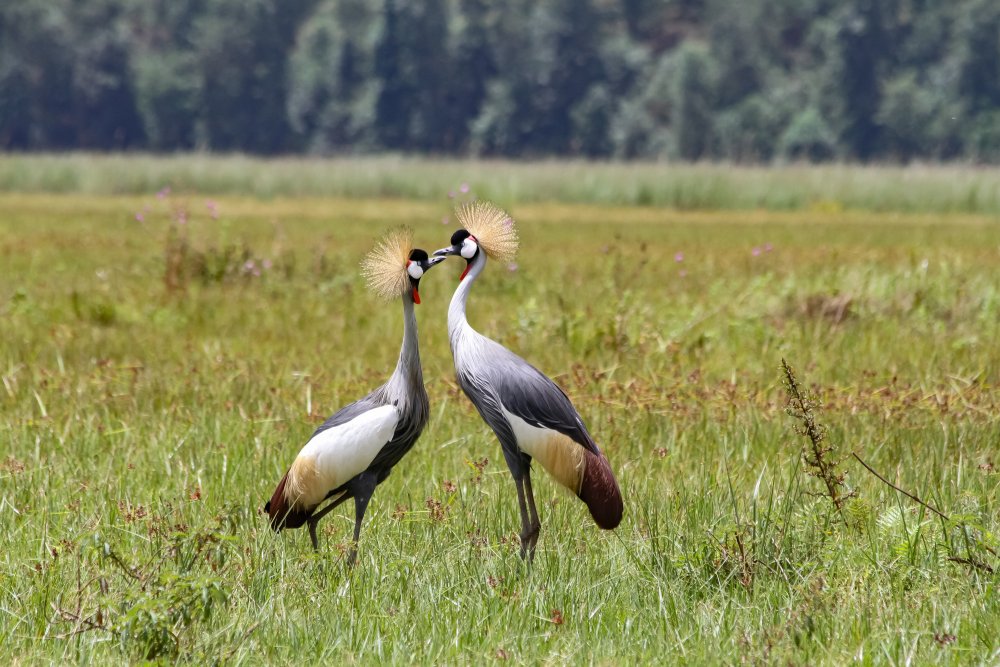According to IGIHE, countries of the East African Community (EAC) are currently engaged in crucial discussions aimed at establishing a coordinated system for sharing information to protect endangered Grey Crowned Cranes. These iconic birds are facing a rapid decline across the region due to persistent threats from poaching and habitat destruction.
The ongoing discussions are taking place in Rwanda’s Nyagatare District, bringing together a diverse group of conservationists and stakeholders from Rwanda, Tanzania, Uganda, and Burundi. Officials from national parks across these countries are also attending, seeking to explore and strengthen cross-border collaboration in safeguarding the crane populations.
During the meeting, experts emphasized that Grey Crowned Cranes are increasingly migrating across national borders, highlighting the urgent need for a unified regional approach to conservation. They issued a stark warning that without immediate and coordinated action, the species could face extinction due to intensified poaching activities.
According to the most recent national census conducted in 2024, Rwanda is home to 1,293 Grey Crowned Cranes, with Nyagatare District alone accounting for over 370 individuals. However, the challenges persist; in the previous year, a local resident in Rwempasha Sector was arrested for poisoning and killing ten cranes, underscoring the direct threats these birds face.
Dr. Déo Ruhagazi, Deputy Director of the Rwanda Wildlife Conservation Association (RWCA), stressed the critical importance of urgent action to curb the decline of this iconic bird species. He noted that Grey Crowned Cranes are not only visually striking but also play a vital role in maintaining biodiversity and healthy ecosystems.
“We’ve trained local residents in areas with a high crane population. We now have 35 community members across different regions who help monitor crane populations, identify nesting areas, and ensure their safety. They also work with communities to discourage crane killings,” said Dr. Ruhagazi.
He added that this community-based conservation model is being shared with other countries, such as Tanzania, as a best practice to protect crane populations across the entire region.
Emmanuel Mgimwa, an environmental officer with Tanzania National Parks (TANAPA), commended Rwanda’s conservation efforts. He reiterated that regional cooperation is indispensable, particularly given the migratory nature of these birds, which traverse national boundaries.
Richard Muvunyi, a wildlife health specialist from the Rwanda Development Board (RDB), further highlighted the economic importance of crowned cranes, particularly for tourism. He urged citizens to avoid harming the birds, emphasizing that many tourists visit Rwanda’s national parks specifically to see them.
“We urge people not to throw stones at the cranes or kill them if they find them in their fields. Instead, they should report to local authorities so that appropriate measures can be taken,” Muvunyi stated.

In a broader environmental context, Rwanda, particularly its capital Kigali, continues to be recognized globally for its cleanliness. This reputation has been earned through the collective dedication of citizens and authorities toward maintaining cleanliness and protecting the environment. A clean environment not only attracts more tourists but also ensures fresh, breathable air and serene natural spaces for residents to enjoy.
Maintaining a healthy environment is a shared responsibility. Rwanda’s Law N° 064/2021 of October 14, 2021, on biodiversity protection, reinforces this commitment. Article 59 of this law stipulates that anyone who removes a wild animal from its natural habitat, harms it, or traffics it, commits a criminal offense. If found guilty, the offender faces a prison sentence ranging from six months to two years, and a fine between RWF 500,000 and RWF 1,000,000.





